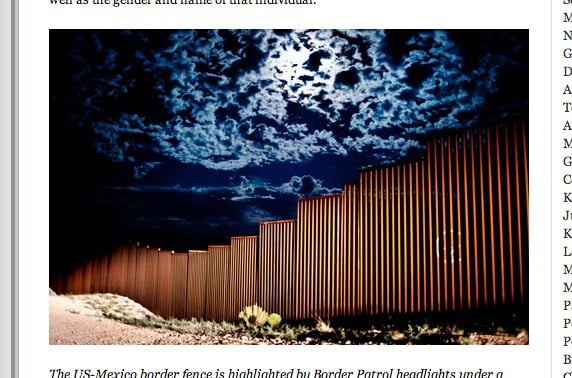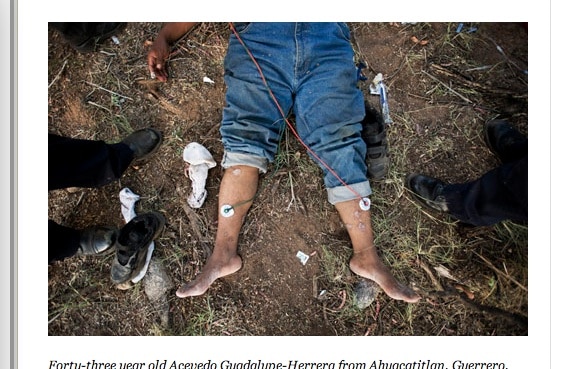What did you notice today?
Back, when I was teaching high school it’s that question that I used to pose, over and over again, to my sophomore students. What did you notice today? Sometimes they were annoyed by the question, sometimes inspired by it, but the desire that lay behind my asking it was this: I wanted to help them to be aware of what was happening in their lives, and of who it was that they had encountered. Deep down I wanted for them, as much as I wanted for me, the ability to notice all the unnoticed things, unnoticed others around us. I didn’t want them to live life without acknowledging that these unnoticed things matter.
I think that sometimes as we read the news, sort through our selected blogs, skim posts and check tweets, that we become over-exposed, incessantly exposed, to information. Sometimes I think we let violence, poverty, injustice, and so on become part of the background noise of our lives. Many times we just see events – like the shipwrecks at Lampedusa, or the tornados that have tunneled through the Midwest – as something far removed from our lives. In other words, we forget to notice the other, to acknowledge their sufferings.
When this happens to me, when I feel so overwhelmed by the incessant stream of information that the suffering of others threatens to recede into the background of my life, I try imagining again. Specifically, I try imagining what I myself would do, feel, taste if I were there, in the shoes of a suffering other. I find that it helps me gain perspective and that it deepens my understanding of reality. It takes an effort, I will not lie. And it does so because – even though I have done this many times – still it challenges my point of view, my political positions, my life style. It may do the same for you.
***
At lot of my online behavior consists of reading news, websites, and blogs for information regarding migration. In the past months I’ve posted about the tragic events at Lampedusa, and about the dead of 92 Niger migrants who died from thirst in the Saharan desert, I shared articles about the need of a humanitarian visa for migrants in Mexico, the devastating effects of deportation for immigrant families in the United States, and a photographic collection of migrants crossing the Arizona Desert.1 Even given my effort to stay open to all these issues, it was this last, the photo essay about migrants crossing the Arizona desert, that asked me to imagine again. To, instead of reacting from passion or from political commitments, touch the reality that these photos presented and through them stand in the shoes of the other.
As I sifted through the photos of migrants crossing the Arizona Desert, trying to feel what each represented, my imagination brought me back to a memory, an experience I had in the summer of 2012. That summer, for five weeks, I traveled along with other six Jesuits through the Mexican migration corridor. During those weeks we visited communities of origin in Central America, we stayed at shelters, spoke to migrants, heard academics and organizations working with migrants, and tried to have a close look at the reality of migration. I told my fellow Jesuits, “we are not playing or pretending to be migrants, but by getting as close as possible to this reality we may get an insight that could help us to gain a deeper understanding of the complexities of migration.” You can see something of our journey here:
Really looking at these photos snapped me back to the experience of travelling the migration corridor myself, memories of listening to migrants’ stories and getting close to the complex reality of migration bubbled up again. And these memories helped me to imagine myself in their shoes.
It was from this place of interior openness that I could remember how the experience confirmed things I’ve since learned through my academic reading. Centrally it confirmed this: Migration is not a problem to be solved, but part of a larger processes of social change.2 Doing my best to step into their shoes, I felt again that people do have the right to aspire to better lives, and I remembered that many times the decision to migrate is not an easy one – especially when migrants are aware of the dangers of their journeys.
Above all, I realized that migration has to do with real people, with real suffering, with real desires, with real challenges. I am a doctoral student, and even though I’ve travelled the migrant corridor, these realities can still seem far removed from my life, from my context, from what I do. It takes an act of the imagination for this to change, it takes seeing ourselves in the shoes of others.
What do we notice? We notice what we allow ourselves to while, all to often, the rest fades into the background. In the case of migration, imagining, noticing again, may help us to understand the urgent need for just migration policies everywhere.
***
The cover image of the US-Mexico border fence is a screenshot from featureshoot.com and can be found here.
— — // — —
- If you’re interested in these, I’d also point you to (1) an article titled “Only The Dead Can Stay” which criticizes Italy’s actions of granting nationality to those migrants who died in the events of Lampedusa, and (2) another article in the New York Times reflecting on the challenges of immigrant families in the United States and the restrictive immigration policies they face. ↩
- See Stephen Castles (2010): Understanding Global Migration: A Social Transformation Perspective, Journal of Ethnic and Migration Studies, 36:10, 1565-1586 ↩



